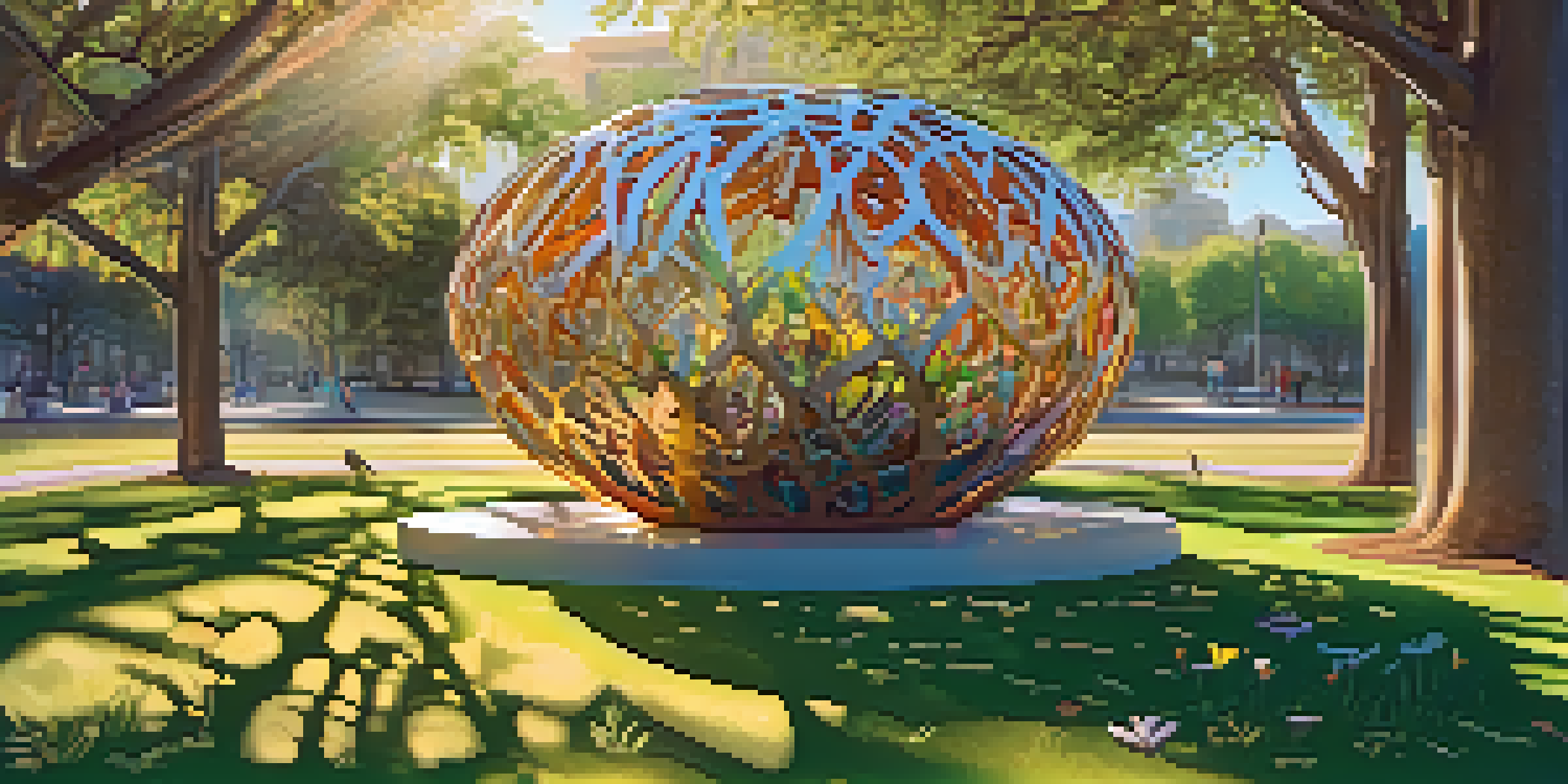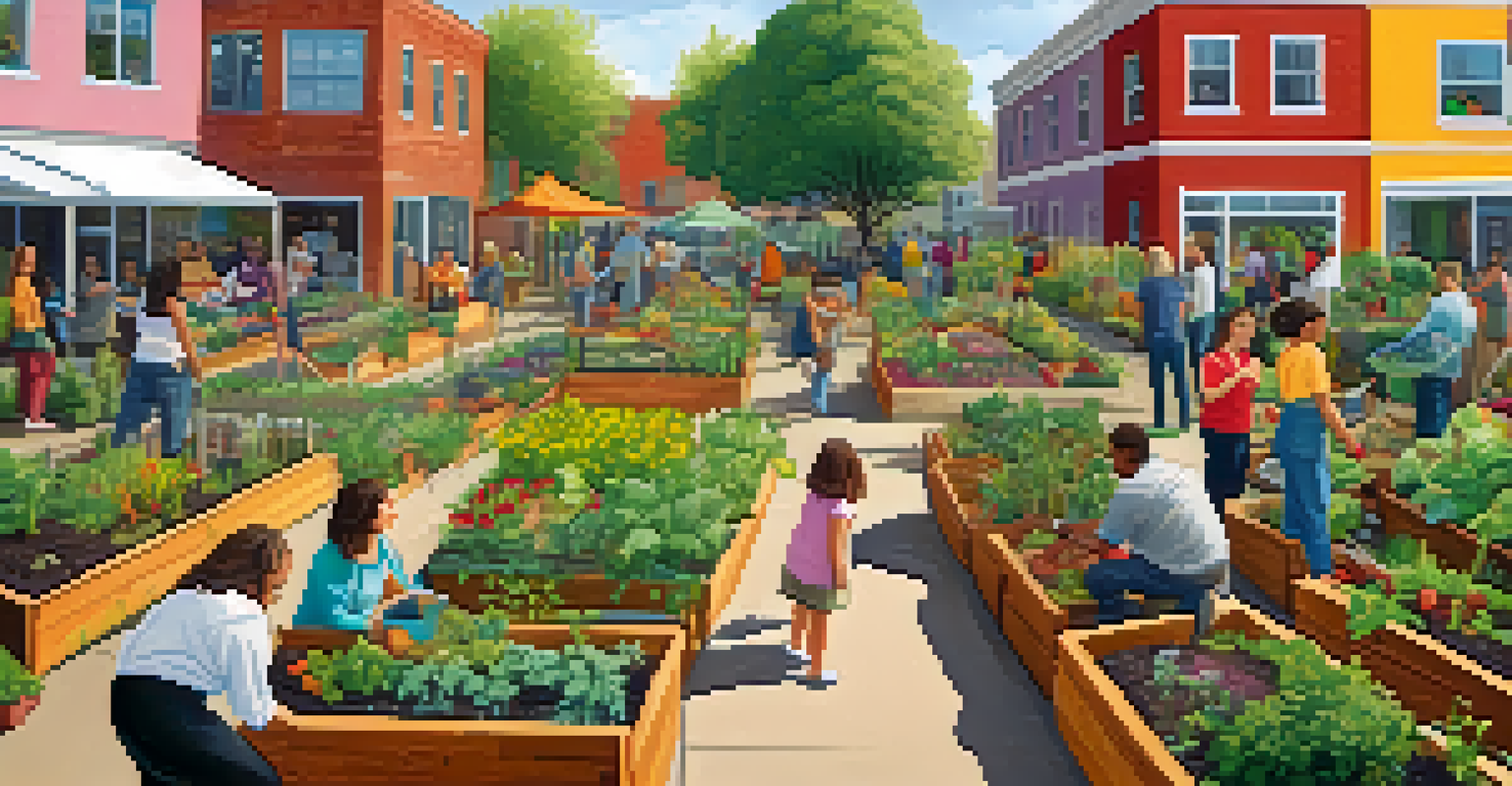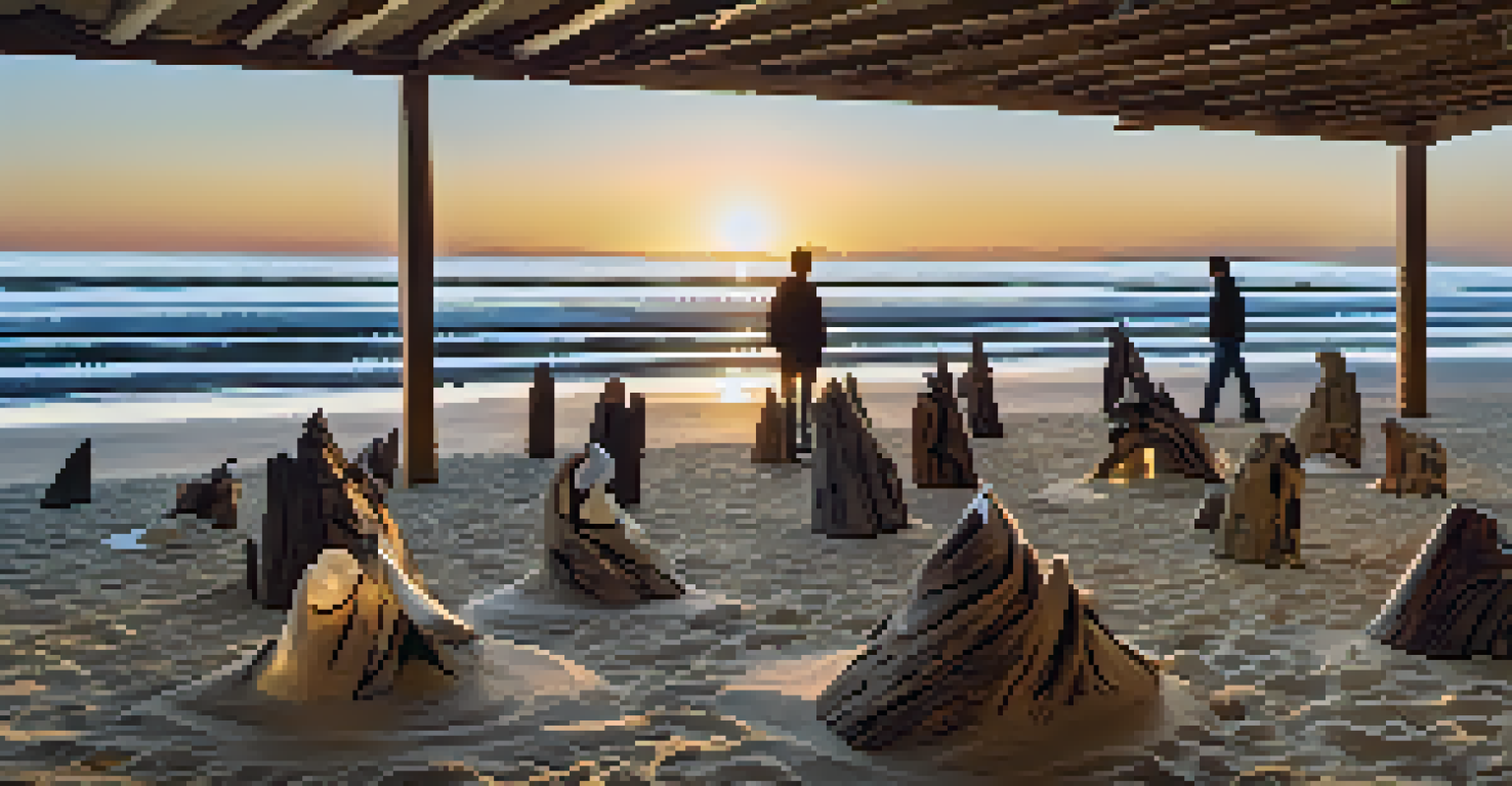Eco-Art: Merging Aesthetics with Environmental Advocacy

What is Eco-Art? Understanding the Movement
Eco-art is an innovative movement that merges artistic creativity with environmental advocacy. It focuses on using art to raise awareness about ecological issues and inspire positive change. By intertwining aesthetics with environmental themes, artists aim to provoke thought and encourage action in their audiences.
Art is the most beautiful of all lies; it allows us to dream of a better world and take action to create it.
This genre often utilizes natural materials, sustainable practices, and community involvement, making it a holistic approach to art. Eco-artists work across various mediums, from sculpture to installations, often placing their work in natural settings to enhance its message. By doing so, they invite viewers to engage with the artwork and the environment simultaneously.
Ultimately, eco-art serves as a reminder of our connection to nature and the impact of our choices. It challenges us to reconsider our relationship with the planet and highlights the importance of conservation and sustainability. This movement is not just about creating beautiful pieces, but also about fostering a deeper understanding of environmental issues.
The Role of Eco-Art in Environmental Advocacy
Eco-art plays a crucial role in environmental advocacy by serving as a powerful communication tool. Art can convey emotions and ideas in ways that statistics and reports often cannot. Through visual storytelling, eco-artists can highlight pressing environmental concerns and galvanize public interest and action.

For example, an installation made from plastic waste can starkly illustrate the pollution crisis in our oceans. By transforming discarded materials into thought-provoking art, artists can bring attention to issues that might otherwise be overlooked. This creative approach can spark conversations and motivate individuals and communities to get involved in environmental efforts.
Eco-Art Merges Creativity and Activism
Eco-art uniquely combines artistic expression with environmental advocacy to inspire awareness and action.
Moreover, eco-art often encourages collaboration among artists, scientists, and activists. This interdisciplinary approach helps to disseminate knowledge and foster innovative solutions to environmental challenges. In this way, eco-art becomes a bridge between creativity and activism, inspiring collective action toward a more sustainable future.
Materials and Techniques in Eco-Art
One of the defining features of eco-art is its use of sustainable materials and techniques. Artists often seek out natural, biodegradable, or recycled resources to create their work, minimizing their ecological footprint. This commitment to sustainability extends beyond the artwork itself, influencing the entire creative process.
The greatest threat to our planet is the belief that someone else will save it.
For instance, an artist might use reclaimed wood or recycled metals to craft a sculpture, showcasing the beauty of repurposed materials. Others may incorporate living plants into their installations, allowing nature to play a role in the art’s evolution. These choices not only demonstrate environmental awareness but also invite viewers to appreciate the value of resources that are often wasted.
Additionally, eco-artists frequently engage in practices that promote sustainability, such as using non-toxic paints or eco-friendly adhesives. By prioritizing environmentally conscious methods, they set an example for others in the art world and beyond, proving that creativity and responsibility can coexist harmoniously.
Famous Eco-Art Installations and Artists
Several notable eco-artists have made significant contributions to the movement, creating impactful installations that resonate globally. One such artist is Christo, known for wrapping large landscapes in fabric, which draws attention to the beauty and fragility of nature. His work often sparks discussions about land use and environmental preservation.
Another prominent figure is Olafur Eliasson, whose installations frequently explore climate change and its effects on our planet. His work, such as 'The Weather Project' at the Tate Modern, invites viewers to reflect on their relationship with the environment and the urgency of climate action. These artists exemplify how eco-art can provoke thought and inspire change.
Sustainable Materials Drive Eco-Art
Artists in the eco-art movement prioritize the use of sustainable and recycled materials, showcasing the beauty of repurposed resources.
In addition to individual artists, community-based eco-art projects have emerged, emphasizing collaboration and local engagement. These initiatives often involve transforming public spaces into green art installations, fostering a sense of ownership and stewardship among community members. Together, these efforts highlight the diverse expressions of eco-art and its potential to influence environmental advocacy.
The Impact of Eco-Art on Communities
Eco-art has the power to transform communities by fostering a deeper connection to the environment. Through interactive installations and public art projects, residents can engage with ecological themes in meaningful ways. This engagement often cultivates a shared sense of responsibility for local ecosystems.
For example, community gardens designed as eco-art installations not only beautify neighborhoods but also provide fresh produce and promote biodiversity. These spaces invite community members to participate in sustainable practices while appreciating the artistic elements that enhance their surroundings. Such projects can lead to increased environmental awareness and activism within the community.
Furthermore, eco-art can serve as a catalyst for social change, addressing local environmental issues and bringing people together. By collaborating on eco-art initiatives, community members can forge stronger bonds and work collectively toward sustainability goals. This communal approach fosters a sense of pride and ownership, reinforcing the idea that art can be a powerful agent for positive change.
Challenges Faced by Eco-Art Practitioners
While eco-art is a powerful movement, it faces several challenges that artists must navigate. One of the primary obstacles is securing funding and resources, as many eco-art projects rely on grants or community support. Artists often need to be resourceful and creative in sourcing materials while balancing their artistic vision with budget constraints.
Additionally, eco-artists may encounter skepticism from the traditional art community, which sometimes overlooks the importance of environmental themes. This tension can make it difficult for eco-artists to gain recognition and support for their work. However, as awareness of environmental issues grows, more institutions are beginning to appreciate and embrace eco-art.
Community Engagement Through Eco-Art
Eco-art fosters community involvement and a shared sense of responsibility, transforming local environments while promoting sustainability.
Moreover, the transient nature of some eco-art installations can pose a challenge. Many projects are temporary, relying on natural materials that may deteriorate over time. While this impermanence can be part of the message, it also raises questions about longevity and the sustainability of the artwork itself. Artists must continually adapt and innovate to overcome these hurdles while remaining true to their mission.
The Future of Eco-Art and Environmental Advocacy
As environmental issues become increasingly urgent, the future of eco-art looks promising. Artists are continuously finding new ways to integrate technology and sustainability into their work, exploring innovative practices that can engage audiences in fresh, impactful ways. This evolution reflects the dynamic nature of both art and environmental advocacy.
Moreover, collaboration between artists, scientists, and policymakers is likely to grow, spurring creative solutions to pressing ecological challenges. By leveraging their unique perspectives, these partnerships can amplify the message of eco-art and foster a more profound societal change. As more people recognize the importance of art in advocating for the environment, the movement will likely gain momentum.

Ultimately, eco-art serves as a powerful reminder of our interconnectedness with the Earth and the role we all play in its future. By merging creativity with environmental advocacy, eco-artists inspire individuals and communities to take action. The future of eco-art lies in its ability to resonate with audiences and spark meaningful conversations about sustainability and conservation.